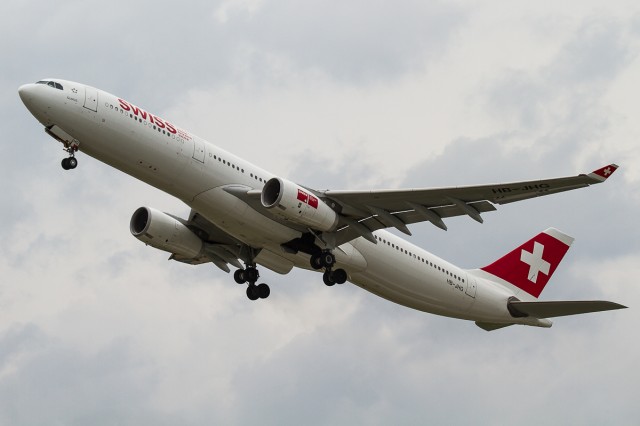
Swiss International Airlines Airbus A330-300 on departure from Zurich – Photo: Jacob Pfleger | AirlineReporter
SWISS INTERNATIONAL AIRLINES BUSINESS CLASS REVIEW BASICS:
Airline: Swiss International Airlines
Aircraft: Airbus A330-300
Departed: Zurich (ZRH)
Arrived: Chicago (ORD)
Stops: Non-stop flight
Class: Business Class
Seat: 4A
Length: About 9.5 hours
Cheers: Mini-cabin that offers additional seclusion and privacy, connection efficiency at the Zurich hub
Jeers: No hot meal offered for second service, despite nearly 10-hour flight length, aging and clunky IFE
Overall: A leading long-haul business class product from an EU carrier, needs a few updates to make it more competitive in the future

Antares explodes following a loss of thrust – Photo: NASA
The last week of October, 2014 was not a good one for commercial space flight. The week started with Orbital Sciences (OSC) attempting to launch their Antares rocket, carrying their unmanned Cygnus cargo vessel to the International Space Station. After a cancelled launch on Monday for a boat in the safety zone, the second attempt on Tuesday ended in failure.
Seven seconds after liftoff, a catastrophic failure in one or both of the engines caused the rocket to lose all thrust and fall back onto the launch pad, with a large explosion. OSC had launched the Antares four times previously with success, three of those times carrying a Cygnus craft. The company has been a major player in the spaceflight industry for over 30 years, having proven themselves with their unique Pegasus rocket, and a wide range of commercial satellites that they produce for various customers.
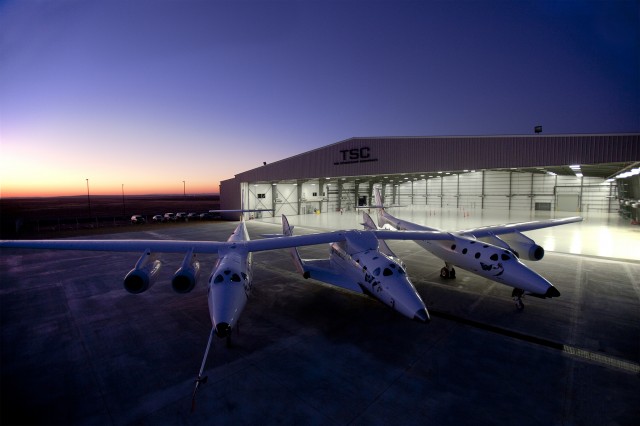
WhiteKnightTwo and SpaceShipTwo togther – Photo: Virgin Galactic
With the failure of the Antares still fresh in everyone’s mind, on the following Friday, Virgin Galactic prepared for a test flight of their private space passenger vehicle, SpaceShipTwo. Shortly after 10:00AM PST, Virgin sent out a cryptic tweet: “#SpaceShipTwo has experienced an in-flight anomaly.” That anomaly turned out to be a worst-case scenario, with the craft breaking up 55,000 ft above the Mojave Desert for still-unkown reasons. With one pilot in serious condition, the other was not as lucky. Mark Alsbury was the latest test pilot to pay the ultimate sacrifice in the pursuit of pushing aviation to the limits. Over the past 70 years, hundreds of brave pilots gave their all for the same purpose, and it has not been in vain.
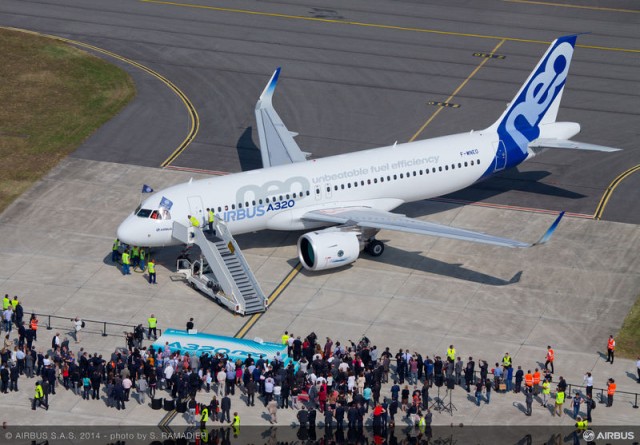
People gathered at Toulouse-Blagnac Airport on 25 September 2014 to witness the historic first “neo” flight – Photo: Airbus
Recently, Leeham News broke news to the world that Airbus is offering a new variant of the A321neo. This aircraft, dubbed the A321neoLR (rolls right off the tongue, right?) is set to extend the range of the aircraft an additional 400-500 nautical miles (nm) over the standard A321neo (now slated to be around the 4,000 nm mark). Airbus has confirmed the aircraft, according to Leeham, and they say that it will have a 100 nm range advantage over the 757-200W, the variant used primarily for trans-Atlantic flights.
Is this new aircraft the death knell finally for the 757?
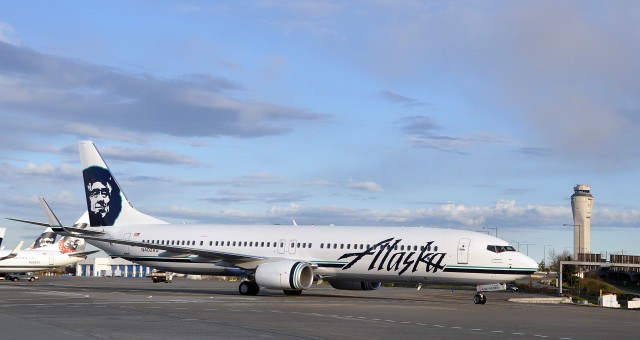
The 737-900ER is a popular choice as a longer-range aircraft to replace older 757s, but is it the right fit? Photo: Alaska Airlines
We have looked multiple times at the differences between the 757 & the A321. The two aircraft have always gone back and forth as apparent direct competitors and even the new 737-900ER, which seem to be extremely popular with airlines like Delta, Alaska or the Lion Air Group from Indonesia, can’t seem to replace the 757.
What keeps Boeing from producing a new aircraft to properly replace the 757?

Exploring the Forbidden City in Beijing – Photo: David Delagarza | AirlineReporter
Back in April, I wrote about taking my nine-month-old on a series of long-haul flights to New Zealand. I concluded that piece with the rather ominous sentence, “Toddlerhood is just around the corner, and I know that won’t be the same experience.” As it turns out, truer words were never spoken.
The genesis of this trip was a Twitter post from one of the airfare alert websites: Denver to Beijing on United Airlines. Cheap. Very Cheap. Heck, the miles alone were worth a substantial portion of the ticket – not to mention this trip would push me up to elite status with United. My wife and I had been considering visiting China to see some friends, but we hadn’t seriously thought about going this year. The availability of cheap tickets over Labor Day made us reconsider. Some quick discussions and a few clicks later it was settled – we were going to China for a week at the end of August. Does anyone else get that pit of the stomach feeling when buying plane tickets for a big trip?
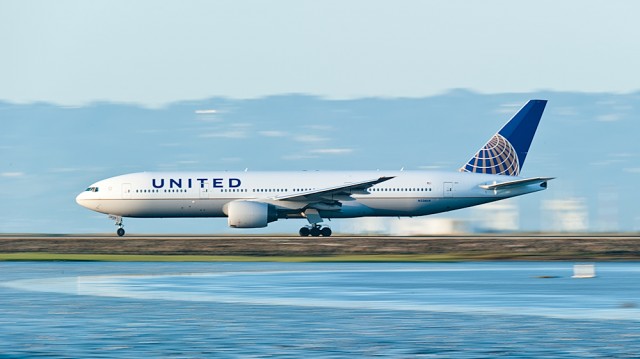
A United Boeing 777 – Photo: Al@fh | Flickr CC
The next decision to be made was whether to bring our fifteen-month-old son with us. Conventional wisdom seems to be that fifteen months is just about the worst possible age to fly – they are too old to sit still, but too young to pacify with electronics. AirlineReporter Associate Editor and fellow father Blaine Nickeson’s exact words were, ’œIt would be AWFUL. I’d strongly recommend against it.’ Other friends told me horror stories of their young toddlers on much shorter domestic flights. No one that I talked to had ever even considered taking their children of that age on long-haul international flights. I myself was firmly set against taking my son along. I’m still not sure how she did it, but my wife talked me into taking him with us. Here we go. Again.
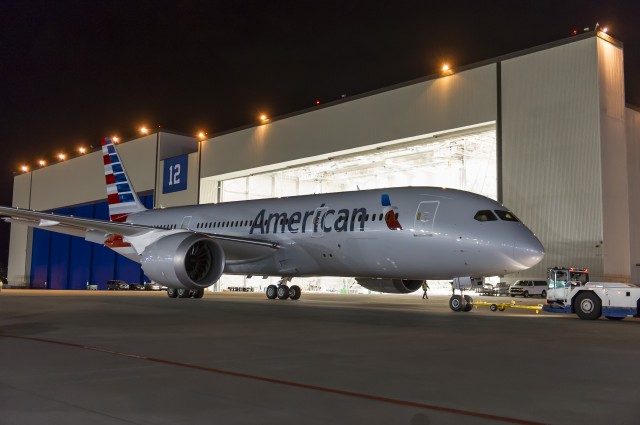
American Airlines’ first Boeing 787-8 being towed at Paine Field – Photo: American Airlines
American Airlines’ first Boeing 787 came out of paint last night giving us a first glimpse at the Dreamliner in AA’s new livery.
When the airline takes delivery, by the end of the year, they will become the second US-based airline to operate the Dreamliner, after United. American has 16 787-8s and 26 of the larger 787-9 Dreamliners on order.
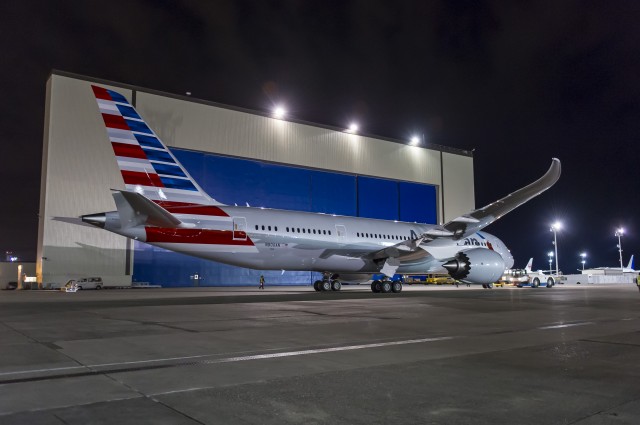
A rear angle of Americans 787 – Photo: American Airlines
Catch more photos of American’s first 787 below.








